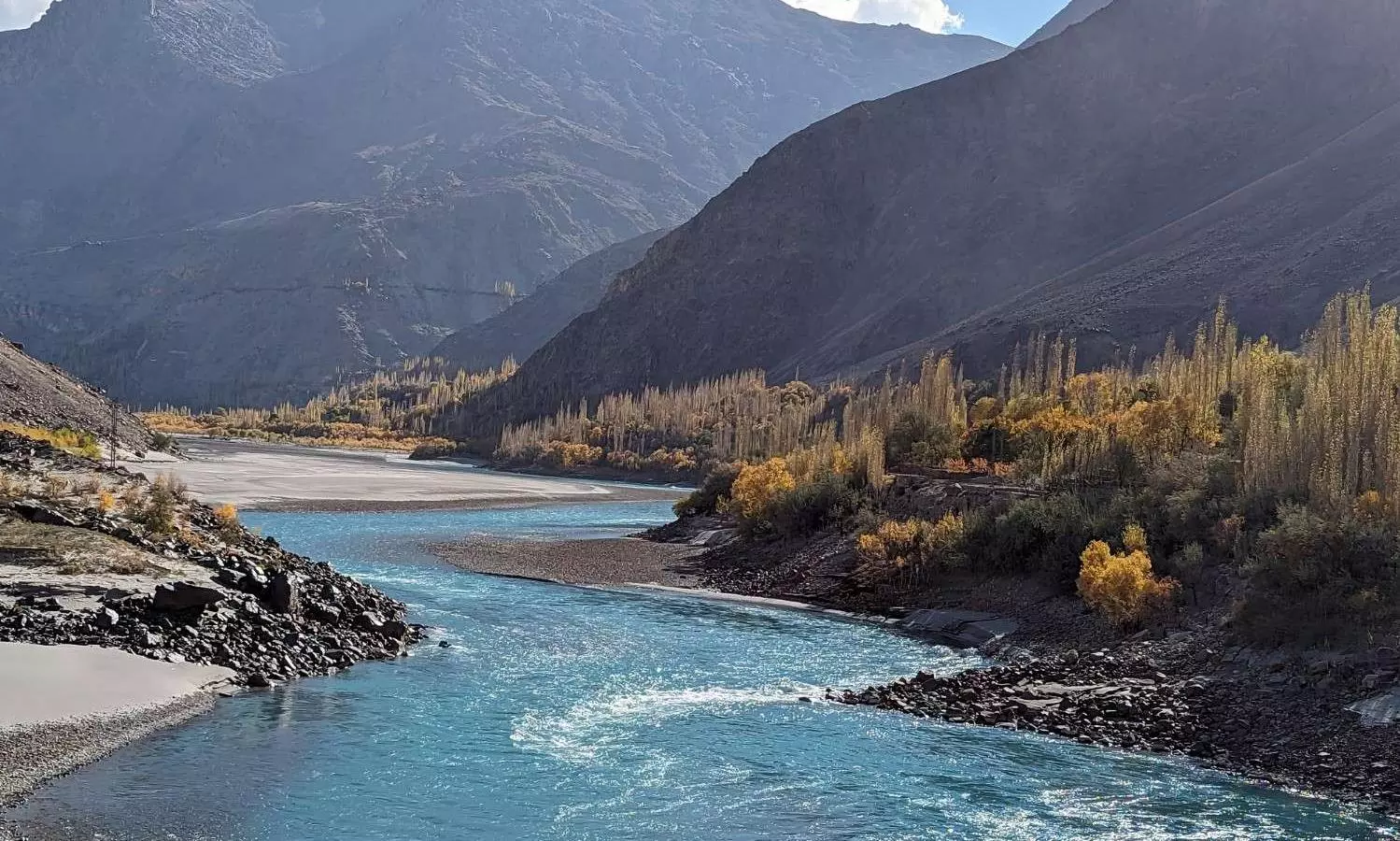
Explained: What is Indus Waters Treaty? How will its suspension hit Pakistan?
India’s move is part of a broader diplomatic offensive, including closure of the Attari border post, cancellation of visas, and expulsion of Pakistani personnel

India’s suspension of the Indus Waters Treaty (IWT) following the Pahalgam terror attack, in which 25 tourists and a local resident lost their lives, marks a watershed moment in South Asia’s hydropolitics.
Signed in 1960 and hailed as a rare example of India-Pakistan cooperation, the treaty has withstood wars, terror attacks, and prolonged hostility.
But after Tuesday's (April 22) terror attack, New Delhi has placed the agreement “in abeyance.”
Foreign Secretary Vikram Misri announced the move as part of a broader diplomatic offensive, which included the closure of the Attari border post, cancellation of visas, and the expulsion of several Pakistani personnel from India.
Also Read: LIVE| We will pursue terrorists to the ends of Earth: PM Modi on Pahalgam terror attack
Treaty’s framework
The IWT was signed in Karachi on September 19, 1960, following nine years of negotiations between India and Pakistan. The Treaty has 12 Articles and 8 Annexures (from A to H).
The IWT allocates the waters of six rivers. India has exclusive rights over the eastern rivers — Ravi, Beas, and Sutlej — while Pakistan receives unrestricted flow from the western rivers — Indus, Jhelum, and Chenab.
While the Treaty cannot be exited, it does contain a dispute resolution mechanism: it lays out procedures for raising grievances — first before the Permanent Indus Commission, then a neutral expert, and eventually, a forum of arbitrators.
Also Read: Red line crossed, India weighs responses to Pahalgam terror attack
Why this matters
The immediate implication of suspending the treaty is that India is no longer obligated to share data on water flow or allow Pakistani inspections of its hydroelectric projects.
It also lifts design restrictions on building water storage structures like dams or flood-control infrastructure on the western rivers.
News agency PTI quoted PK Saxena, India’s former Indus Water Commissioner, as saying that India can now create reservoirs on the Indus river system without any prior notification or design restriction.
He added that this could be the first step towards the abrogation of the Treaty, especially under provisions of the Vienna Convention that allow a treaty to be repudiated under “fundamental change of circumstances.”
Saxena also said that India is under “no obligation” to follow the restrictions on the "flushing" of the Kishanganga reservoir and other projects on Western rivers in Jammu and Kashmir.
“Reservoir flushing (a technique used to remove accumulated sediment from reservoirs by releasing water through low-level outlets to scour out the sediment and transport it downstream) on the Kishanganga project will increase the life of the dam,” he said.
Also Read: Indus Waters Treaty: India issues notice to Pakistan for modification
Will there be an immediate impact?
Pakistan’s agriculture-heavy Punjab province is heavily dependent on Indus waters. India's moves like reservoir flushing or adjusting flow timings — especially during Pakistan’s sowing season — could disrupt farming cycles.
Two important irrigation works, one at Madhopur on the Ravi River and the other at Ferozepur on Sutlej River, on which the irrigation canal supplies in Punjab (Pakistan) had been completely dependent, also fall in the Indian territory.
However, the suspension will not have an immediate impact on the flow of water to Pakistan for a few years at least. India currently does not have the infrastructure to either stop the flow of water into Pakistan, or to divert it for its own use.
Also Read: Post Pahalgam terror attack, 'alpha male' Modi faces his sternest challenge yet
Legal nitty-gritty
Despite lacking a formal exit clause, India invoked Article 62 of the Vienna Convention, which allows treaties to be suspended under radically changed circumstances.
Critics argue this is a legal grey area, especially as the IWT does not permit unilateral withdrawal.
But former Pakistani federal law minister, Ahmer Bilal Soofi, had said that arbitration may not offer much recourse if India chooses not to follow the Treaty.
"Since there is no provision in the IWT about its duration or suspension, there is no avenue that Pakistan can approach for ‘revival’ of the treaty," Soofi had said
Also, Pakistan cannot approach the International Court of Justice seeking specific performance to implement the Treaty because of the Indian reservation given under the ICJ statute that bars the filing of a case by Pakistan against India.
Also Read: Honour provisions of Indus Water Treaty: Pakistan urges India
What India can do
Pakistan has long objected to India’s Kishanganga and Ratle projects, alleging violations of design norms under the IWT.
With the treaty now suspended, Indian projects like Salal, Uri, Pakal Dul, and others in Ladakh may proceed unhindered.
There are also operational restrictions on how reservoirs are to be filled and operated. With the treaty in abeyance, these are no longer applicable.
Saxena noted: “Pakistan’s objections on these projects now have no bearing. Operational restrictions — including when to fill reservoirs — no longer apply.”
India will also stop sharing water flow and flood data, which could severely affect Pakistan’s disaster preparedness.
Also Read: Pahalgam attack: 'Nothing to do with it', Pakistan claims; Delhi skeptical
Strong diplomatic warning
India’s decision to suspend the Indus Waters Treaty with Pakistan signals that, until Pakistan credibly and irrevocably abjures its support for cross-border terrorism, it will have to face consequences for its actions.
While actual diversion of water may take time, the diplomatic signal is immediate and potent.
Pakistan is yet to issue an official response to India’s suspension of the IWT.

